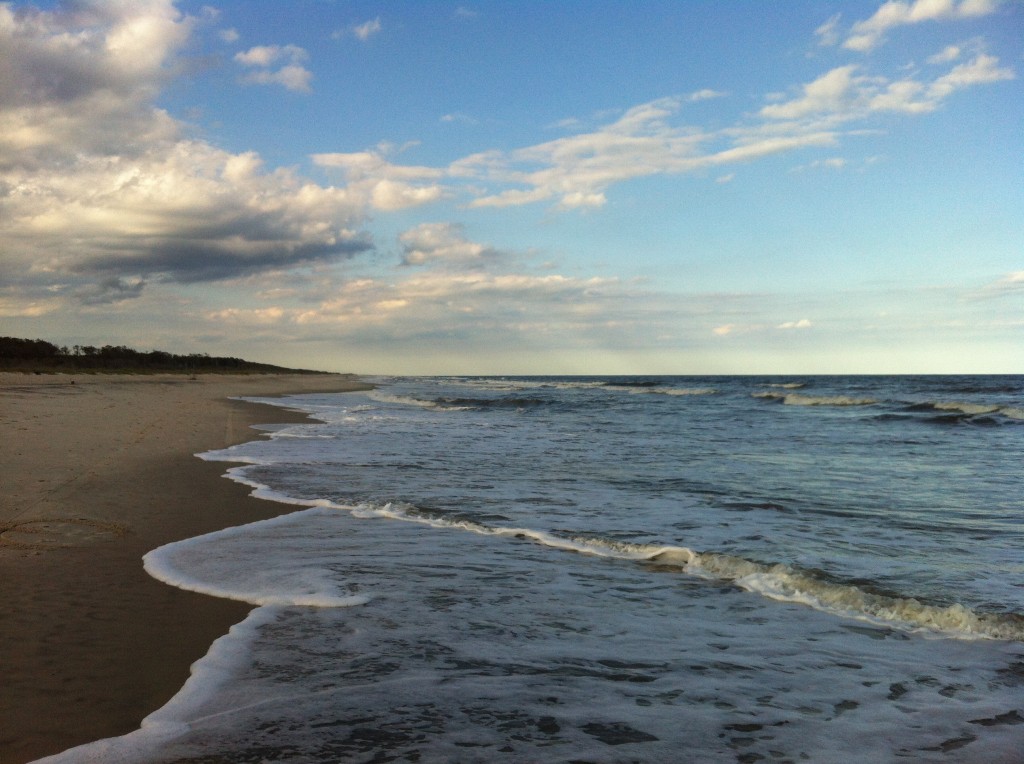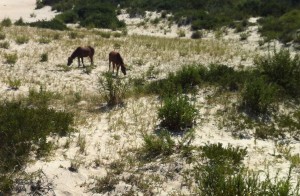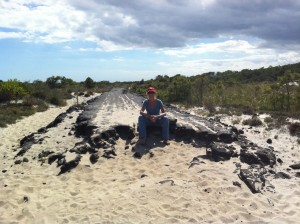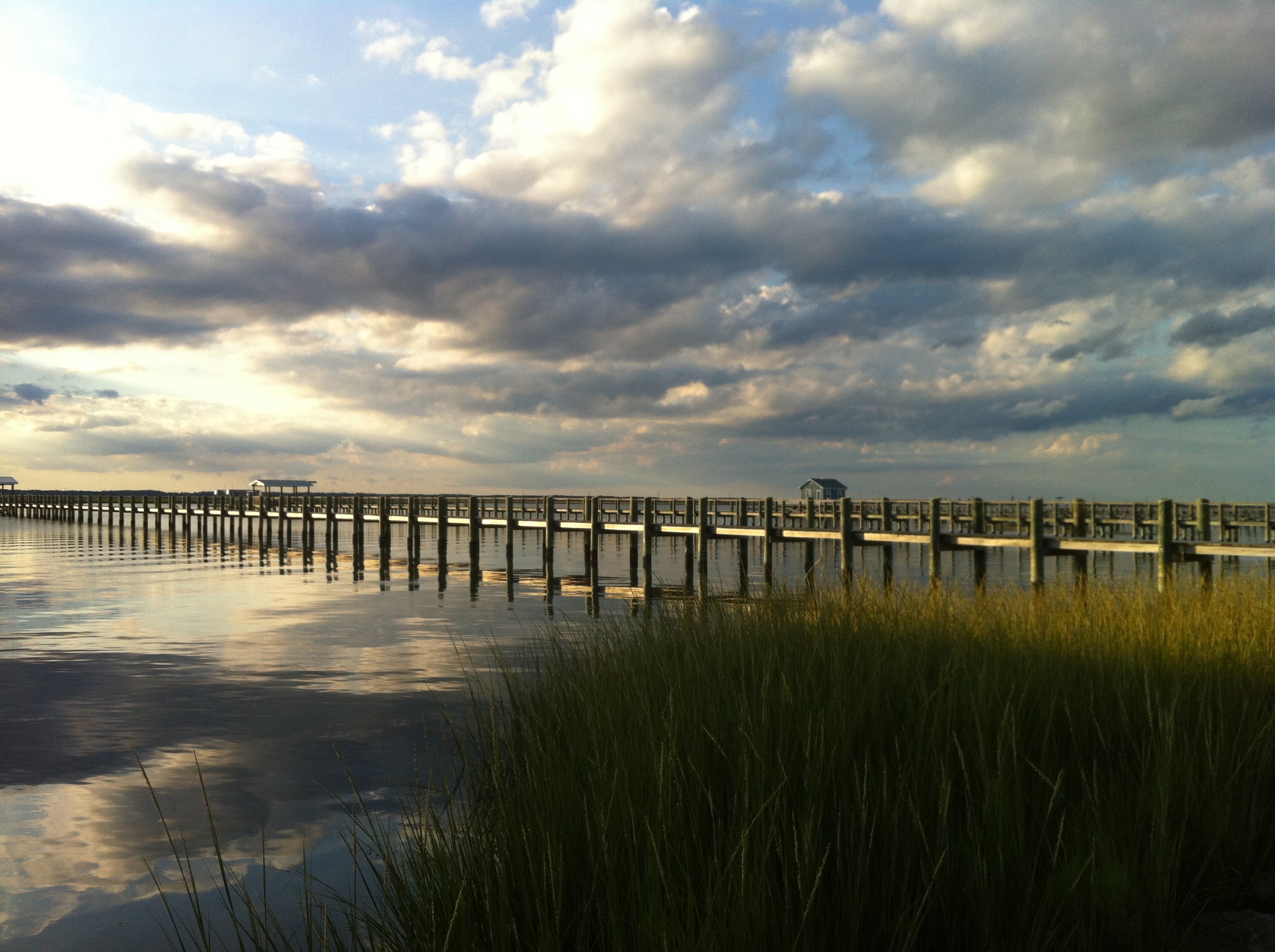On the Road: Baltimore Boulevard

Assateague is a windswept barrier island off the coast of Maryland. In 1962 there was a 15-mile road running down the middle of it, all the way to the Virginia state line. “Baltimore Boulevard” was built to pave the way, literally, for a sprawling new housing development that would include 130 side streets and 9,000 subdivided lots. (To give a comparison, the current year-round population of nearby Ocean City, MD is about 7,000—that’s people, not property lots.) Then the great storm of ’62 hit.

The deadly nor’easter wiped out Baltimore Boulevard, devastating coastal communities in half a dozen states and shifting, as it went, not just wind and sand, but local popular opinion, too. Perhaps it was better not to build after all.
Today that pristine strip of land is Assateague Island National Seashore. Wild horses roam the forest and graze in the scrubby vegetation lining white sand beaches. Visitors swim in the Atlantic surf or dig for clams on the bay. And if you hike the Life of the Dunes trail you’ll find, among the seagulls and bayberry shrubs, a small raised stretch of asphalt, the flat black rock resembling a jetty, except it runs parallel to the sea. It is the remains of Baltimore Boulevard, polished smooth by time and tide, a reminder of what might have been. “These broken slabs are now used only by gulls,” states a marker on the trail, “which drop and crack clams on the hard surface.”

The Delmarva Peninsula comprises most of Delaware and what’s known as the “eastern shores” of Maryland and Virginia, the companion body of water being the Chesapeake Bay, home of the watermen who make a living catching crabs and oysters (read William Warner’s Pulitzer Prize-winning Beautiful Swimmers) as well as recreational sailors and other boaters. Assateague borders a long stretch of the peninsula’s Atlantic Ocean shoreline. From southern New Jersey, you can take the Cape May-Lewes Ferry and drive right down the Delaware coast—through Dewey Beach, Bethany, and Fenwick Island. Just south of Ocean City, MD the Verrazano Bridge (not that one, but named for the same Italian explorer who, it should be noted, sailed past the Chesapeake almost a century before Captain John Smith showed up to chart its waters and encounter Pocahontas) connects you to the northern tip of Assateague and the National Seashore Visitor Center.
The island is 37 miles long and today, 50 years after Baltimore Boulevard’s demise, there are no roads running the length of it. To get to see the southern part—Chincoteague National Wildlife Refuge in Virginia—you have to cross the bridge back to the mainland, turn left, drive south for a while, then head back to the coast. We arrived in late afternoon—just as the staff was getting ready to leave—but in time for the ranger—a city kid from Brooklyn—to map out a route to what he described as the most beautiful piece of shoreline in the Mid-Atlantic. The evidence backs him up. Look for the Swan Cove trail off the Wildlife Loop. The sound of pounding surf, heard clearly at the trailhead half a mile from the water’s edge, guides the way. From the beach there is an unblemished view of the coast. Looking south you can see a town way off in the distance, but north there is nothing manmade, not even people, just miles of sand, sea, and sky.
The refuge was closing early that day because, the guard at the gate informed us, they were “in the debris zone,” a perfectly euphemistic way to say there was potential danger from a rocket launch that night. NASA’s Wallops Flight Facility, about 20 minutes inland, was sending the LADEE exploratory space probe to the moon. It was, as the clerk at our hotel put it, “kind of a big deal around here.” The rocket launched at 11:27 p.m., the firing of the engines creating a burst of red-orange glow on the horizon from which the rocket emerged, rising first, then arcing across the sky like a comet. The next morning a man told us cars were stopped all along the bridge part of the 20-mile long Chesapeake Bay Bridge Tunnel 90 miles away. Motorists parked on the span—itself considered one of the seven engineering wonders of the modern world when it was built in 1964—and watched the eerie light, and its promise of tomorrow’s discovery, disappear into space.

